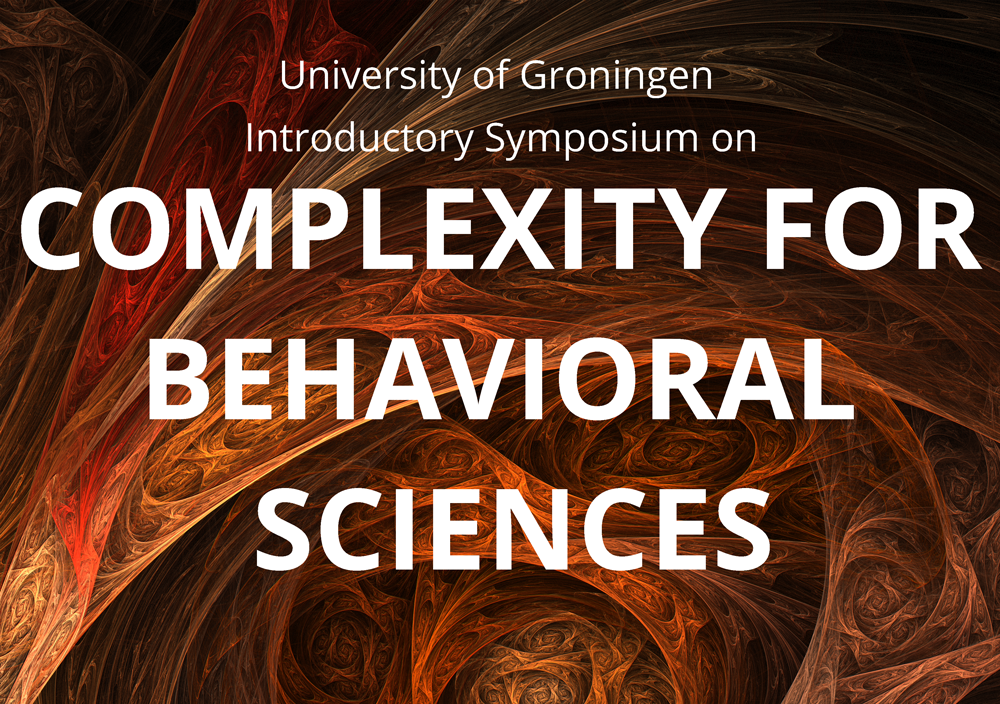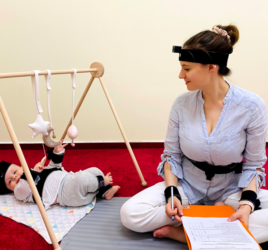
Invitation to the 1st Symposium for Complexity for Behavioral and Social Sciences.
This post was written together by Ole Gmelin, Elena Pohl and Stefan Veselinov.
Social interactions are like a dance. You’re sitting in a Café with a good friend. You’re talking and laughing. Your friend is leaning in to tell you something personal, and you follow – mirroring their posture. A little later you shift your position, crossing your arms; shortly after they are crossing theirs. While we are usually not aware of the continuous coordination of movements, we often experience its result – a feeling of rapport. Notably, in this kind of situation no one is ‘leading’ the coordination of gestures and postures. Instead, you and your friend are influencing each other mutually. This means that both of you are leading and following simultaneously. Two people coordinating movements are forming a ‘dynamic system’. In such a system the individual components (you and your friend in this case) cannot be viewed as independent from each other. Much like two dancers, they are in constant flow.
Dynamic systems can be found everywhere in the behavioural and social sciences.
Dynamic systems can be found everywhere in the behavioural and social sciences. When interacting with others we do not only attune in terms of visible behaviour, people have also been found to adapt on invisible levels: for example, lovers’ heartbeats become similar while gazing into each other’s eyes [1]. Importantly, relationships of mutual influence are not restricted to physiological processes. For example, a child’s self-esteem and their parent’s display of relatedness have been found to mutually influence each other during interactions (see e.g. Naomi de Ruiter’s post on this). And even within one person different kinds of psychological processes can form dynamic systems: Mental disorders can be understood as a network of processes and outcomes that become associated and stabilized over time (e.g. see this talk of Prof. Dr. Peter de Jonge).
Dynamic systems can be found at different levels, ranging from the very small (micro-level) to the very large (macro-level). On a micro-level there are, for example, networks of neurons whose firing is central to your cognition, experiences and the regulation of physiological states. On a broader level the dynamic network of neurons that constitute your brain is itself part of a system of organs, muscles and bones that form your body. Without their interaction it would be impossible to move around, take action, interact and make use of your environment. On a macro-level, your body is part of social systems (there are other bodies after all) that are embedded in cultural and historical contexts which impact your behaviour. It should be emphasized that each of these levels is interacting with all of the other levels, and that all levels are equally important when studying psychological processes and behaviour.
The goal of Dynamic Systems Theory is to explain how complex and adaptive behaviour can arise in a system composed of a large number of interacting components.
The way that systems behave and influence each other across different levels is the focus of an approach called Complex Dynamic Systems Theory. Coincidentally the changes and variability, and mutual dependence within dynamic systems of behaviour and cognition resemble those in the natural sciences. The world’s global climate or ecosystems (see for example how the return of wolves changed river beds in the Yellowstone National Park) are examples of such complex systems. The goal of Dynamic Systems Theory is to explain how complex and adaptive behaviour can arise in a system composed of a large number of interacting components. And insights from studying dynamic systems in nature and physics can foster an understanding of the underpinnings of human cognition and behaviour. They can help us to understand the rules of our daily dances.
If you are interested in learning more about the complex dynamic systems approach in the behavioural and social sciences you are lucky. The department of Developmental Psychology of the RUG is organizing a morning symposium for students and interested staff aimed at providing you with an overview of the theoretical background of the field, with examples from different fields such as Psychology, Philosophy, Human Movement Sciences and Linguistics. The symposium will take place on the 17th of November 2017. If you are even more interested, you are invited to also join a series of afternoon workshops. The workshops will be given by researchers from different disciplines and will include both theoretical as well as practical sessions that attendees can choose from. Both the lectures as well as the workshops will be free. Due to limited availability of the workshops registration is required. To sign up for the workshops send an email with your name and study background (or department affiliation for staff) to complexity.symp.2017@gmail.com by the 10th of November. For further updates on the program send us an email with the subject heading ‘Update’, or follow our event on Facebook. We are looking forward to seeing you on the 17th. In the mean-time have a look at this introductory talk to complexity by Ralf Cox.
Note: Image by Stefan Veselinov.
References:
[1] Helm, J. L., Sbarra, D., & Ferrer, E. (2012). Assessing cross-partner associations in physiological responses via coupled oscillator models. Emotion, 12(4), 748-762.



